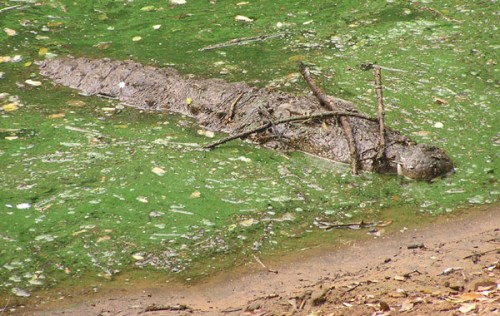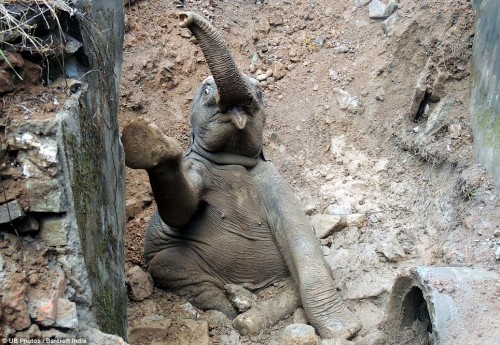A chimp using sticks for foraging army ants or an octopus using coconut shells as home are some of the known tool uses in the animal world that are amazing proofs of how humans are not the only species that use an object for a specific purpose. Now scientists have been surprised to discover that reptiles like the Indian Magar crocodile and the American alligators too use tools- specifically sticks to lure their bird prey near water and nab them!
In a new study done by Dinets and fellow researchers, the scientists observed Magar crocodiles (Crocodylus palustris) in India and American alligators (Alligator mississippiensis) in the USA balancing stick on their snouts. What might appear to be an accidental stick landing on the snout, is in reality a purposeful act and tool use to catch birds.
The crocodiles deliberately put sticks on their snouts and remained submerged in water near egret and heron colonies. When the nest building birds, spot the sticks and approach them unaware of the dangers lurking under water, the crocodile find the chance to grab its prey.
What the researchers also observed was that the crocodiles’ behavior was not random but coincided with the nesting and breeding season of the egrets and herons usually in the month of March and April. It also was observed in animals that lived near rookeries.
Therefore, the reptiles displayed intelligence of specifically choosing an object that could help them achieve a goal and that too at a precise time when they knew their target prey would need the sticks for creating nests.
The researchers add that the behavior becomes all the more interesting because floating sticks are extremely rare in the pools, especially at the time of year concerned. This is because the local trees – baldcypresses and water tupelos – don’t shed twigs, and also because the nesting birds rapidly remove floating sticks for nest-building. Thus, what the crocs are displaying is a purposeful act, where they are deliberately looking for the sticks, and using them to target prey birds.
Baiting Behaviour
The kind of behavior displayed is called as baiting behavior and has also been observed in by Green herons Butorides virescens and other species of birds and animals. The herons use feathers, twigs and even berries and bits of bread to attract fish.
The present study authors believe that because the baiting behavior has been observed in two crocodiles species separated by continents, it can be presumed that the behavior is probably widespread and common among the animals.
The study only shows how much we still do not know about animals and their behavior as well as their intelligence. The famed foolish croc ‘Doob-doob’ of Tinkle comics who is persistently fooled by Kalia the crow, is not that naïve after all. Watch out Kalia!
More Related Stories,
Crocodile Hacked to Death in Odisha
Image and Reference










Its amazing discovery, we are still just understanding so many things about wild animals and most of them are smarter than we thought…
So true. sad part is, some species are already dying even before we get to know more about them.